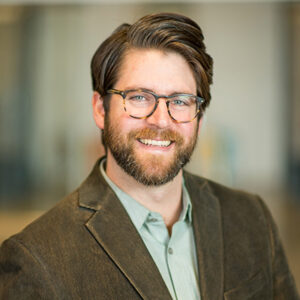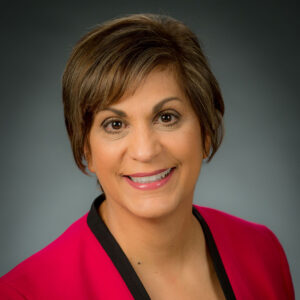New Data Reveals Few Community College Transfers Complete a Bachelor’s Degree
Experts say ‘exclusionary’ transfer practices are failing community college students — especially those from Black, Latino and low-income backgrounds.

Help fund stories like this. Donate now!
A new report has revealed only 16 percent of community college transfers earn a four-year degree with Black, Latino and low-income students taking the brunt of the completion outcomes.
The data, released by the Community College Research Center and the Aspen Institute College Excellence Program, found about one-third of community college students transfer to a four-year school with less than half graduating within six years — equating to the net completion rate of 16 percent.
But the report, in collaboration with the National Student Clearinghouse Research Center, saw even smaller completion rates for students who are Black, Latino and low-income at 9, 13 and 11 percent respectively.

John Fink, a senior research associate at the Community College Research Center, said this is because the transfer system is “riddled with barriers” from the historic lack of collaboration between community colleges and four-year schools.
“It’s not an equitable system when we rely on [community college] students to come in with knowledge of this hidden curriculum on how to transfer instead of holding institutions responsible for creating clear pathways and adequate advising along the way,” Fink said.
The confusion and lack of clarity has added to students’ growing disdain for working towards a four-year degree as recent enrollment gains come particularly from community colleges with a vocational program focus, Fink said.
“The [transfer system] largely replicates existing societal inequities,” Fink said. “The folks who are going to community college in large numbers are from communities that have historically had less access to bachelor and graduate degrees — like low-income and students of color.”
“If there’s no additional resources and support to make up for this, you can expect to see these disparities in completion outcomes,” Fink said.
Disparate Bachelor’s Degree Outcomes
The report showed mixed four-year completion outcomes from community college transfers demographically, Fink said.
Low-income, Black and Latino students saw completion rates below the national average, in addition to men and students 25 years or older.
But high-income, Asian and White students saw completion rates above the national average, in addition to women and students 18 to 19 years old.
Fink said completion rates have increased slightly compared to previous years — jumping from 14 percent in 2016.
But he noted the increase is “not a lot [and] definitely not where we need it to be.”
“There is so much potential here to create greater economic mobility, to further diversify student bodies and to bring in community college transfers that can perform at the same if not higher rates than non-transfer students,” Fink said.
Fink said creating a “sense of belonging” on campus and expanding core practices such as dual enrollment will greatly improve transfer completion outcomes.
“Visibility, belonging and inclusion are important things to think about in order to change some of these dismal outcomes nationally,” Fink said.
‘Exclusionary’ Transfer Practices
Dr. Marielena DeSanctis, president of the Community College of Denver, said the completion disparities for students from low-income backgrounds are troubling.
“There’s plenty of data that speaks to more and more jobs requiring a bachelor’s degree, so it’s concerning when you start limiting the number of people that can attain one,” DeSanctis said.

DeSanctis, who previously worked at Broward College, said Florida has a very different landscape for students to transfer from a community college to a four-year school compared to Colorado.
“There was no question that the courses you were taking were going to transfer and that it was going to be equivalent credits [but] here in Colorado that’s not the case,” DeSanctis said, noting the harm of “exclusionary” transfer practices she’s noticed from four-year schools.
“Because community colleges tend to be more racially and ethnically diverse, we should be telling students that community college is a vehicle to transfer to a university — particularly students that are ready to change the trajectory of their lives,” DeSanctis said.
Debi Gaitan, vice president of student services at Northwest Vista College, agreed with DeSanctis, adding that constraints placed on students from low-income backgrounds shouldn’t hinder them from having access to a four-year school whether they decide to transfer or go straight into the workforce.
“San Antonio is very much a city where we can see where our communities of poverty reside and they feed directly into our institutions,” Gaitan said, noting that her students are often part-time, caring for family members and working to make ends meet.

“We want to ensure the stigma of not completing is not placed on this population,” Gaitan said. “It’s more about ‘did they reach their goal of being able to get a better job with better income to get out of poverty.’”
Gaitan said it’s important for both community colleges and four-year schools to actively reach out to students from low-income backgrounds.
“Students that have choices and are resourced know about us and know what we have to offer,” Gaitan said. “Therefore we need to shift to the communities that don’t know we’re here…[because] students from intergenerational cycles of poverty need those same resources our upwardly mobile, higher income communities already have.”
Gaitan said resources that have been effective in her community include counseling programs and “apartment starters” where students have access to microwaves, washing machines and other household needs so they can focus on their studies.
“These are communities that need us to be different and need us to be doing more,” Gaitan said. “We want as many people in higher education to know this as possible because that’s how we have learned and that’s how we have adopted and adapted some really promising practices.”
This article is part of a series in partnership with reporter Joshua Bay’s Poynter-Koch Media and Journalism Fellowship highlighting the struggles of community college students.
Help fund stories like this. Donate now!

;)
